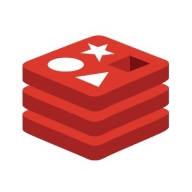

Red Hat Data Grid and Redis compete in data caching and in-memory data management products. Redis often has the upper hand due to its feature set, while Red Hat Data Grid may appeal because of its pricing and support.
Features: Red Hat Data Grid is known for robust distributed caching, data consistency, and scalability. Redis is favored for its extensive data structures, ease of setup, and versatile use cases. Both offer high performance, with Redis's broader feature array giving it an edge.
Ease of Deployment and Customer Service: Red Hat Data Grid provides straightforward deployment in enterprise environments with reliable customer service. Redis allows easy cloud-based deployments supported by a strong community and commercial options. Red Hat Data Grid focuses on enterprise support, while Redis relies on deployment flexibility and community support.
Pricing and ROI: Red Hat Data Grid has competitive pricing models that suit varied enterprise needs, offering substantial ROI through cost-effective scalability. Redis can require a higher initial investment but delivers significant value through a comprehensive feature set and performance, justifying its cost in environments utilizing its capabilities for complex applications.
| Product | Market Share (%) |
|---|---|
| Redis | 8.9% |
| Red Hat Data Grid | 4.0% |
| Other | 87.1% |

| Company Size | Count |
|---|---|
| Small Business | 11 |
| Midsize Enterprise | 3 |
| Large Enterprise | 8 |
Red Hat Data Grid is an in-memory key-value data store, similar to a NoSQL database, and can be used by applications as their primary data store for rapid access to in-memory data, although data may also be persisted for recovery, backup, and archiving.
Redis offers high-speed, in-memory storage, renowned for real-time performance. It supports quick data retrieval and is used commonly in applications like analytics and gaming.
Renowned for real-time performance, Redis delivers high-speed in-memory storage, making it a favorite for applications needing quick data retrieval. Its diverse data structures and caching capabilities support a broad array of use cases, including analytics and gaming. Redis ensures robust scalability with master-slave replication and clustering, while its publish/subscribe pattern renders it reliable for event-driven applications. The solution integrates smoothly with existing systems, minimizing performance tuning needs. Although documentation on scalability and security could be improved, Redis remains cost-effective and stable, commonly utilized in cloud environments. Enhancing integration with cloud services like AWS and Google Cloud and refining GUI may improve usability.
What are the key features of Redis?Redis finds application across industries for tasks like caching to improve application performance and speed, minimizing database load. It enables real-time processing for session storage, push notifications, and analytics. As a messaging platform, Redis handles high traffic and supports replication and clustering for cross-platform scalability.
We monitor all NoSQL Databases reviews to prevent fraudulent reviews and keep review quality high. We do not post reviews by company employees or direct competitors. We validate each review for authenticity via cross-reference with LinkedIn, and personal follow-up with the reviewer when necessary.